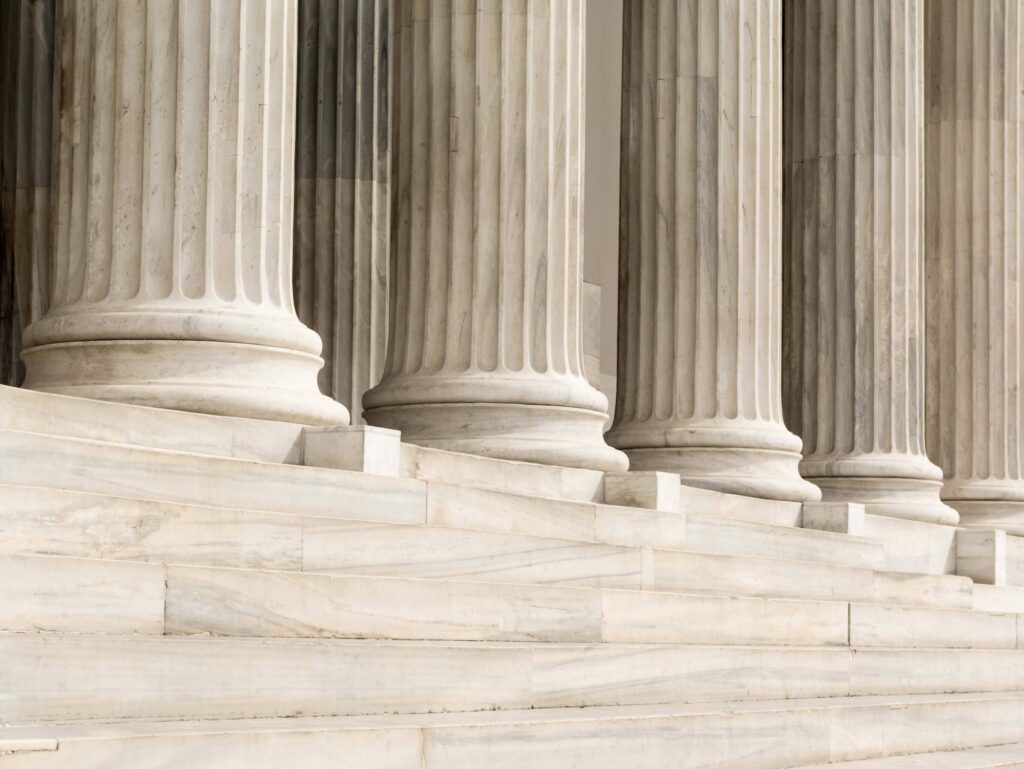
Client Alert: What Businesses Need to Know About the Paycheck Protection Program
The Coronavirus Aid, Relief, and Economic Security Act (“CARES Act”) earmarks $350 billion to a loan program designed to keep small business workers employed during the COVID-19 pandemic and its associated economic downturn. This loan program is called the Paycheck Protection Program (“PPP”).
The PPP provides fully federally guaranteed loans to small businesses in amounts up to $10 million based on the business’s average payroll costs. These loans may be forgiven if borrowers either maintain their payrolls during the emergency period caused by the COVID-19 pandemic or restore them shortly afterward.
The Small Business Administration (“SBA”) is administering the PPP and had 15 days from the March 27, 2020 date of enactment of the CARES Act to issue regulations. Interim final rules on the PPP were issued on April 2, 2020.
This Client Alert examines five key components of the PPP: 1) eligibility for PPP loans; 2) amounts that businesses can borrow; 3) calculation of average payroll costs; 4) lender evaluation requirements; and 5) potential forgiveness of PPP loans.
Eligibility for PPP Loans
To be eligible, a business first must have been operational on February 15, 2020. Next, the business must be one of the following:
- A business with fewer than 500 employees;
- A business that otherwise meets the SBA size standard (which varies by industry and is usually measured by the number of employees or gross receipts);
- A Section 501(c)(3) organization with fewer than 500 employees;
- A Section 501(c)(19) veterans organization that meets the SBA size standard;
- A tribal business concern that meets the SBA size standard;
- An individual who operates as a sole proprietor;
- An individual who operates as an independent contractor; or
- An individual who is self-employed and who regularly carries on a trade or business.
The 500-employee limitation includes all types of employees — full-time employees, part-time employees, and temporary or leased employees.
Two special rules also affect eligibility:
- Businesses in the accommodations and food services sector (i.e., under NAICS code 72), can apply the 500-employee limitation on a per physical location basis; and
- Businesses that operate as a franchise or which receive financial assistance from an approved Small Business Investment Company do not need to apply the standard affiliation rules.
The deadline to apply for PPP loans is June 30, 2020.
Amounts That Businesses Can Borrow
The maximum amount an employer can borrow under the PPP is two and one-half times (“2.5X”) its average monthly payroll costs or $10 million, whichever is less. In accordance with the interim final rules issued on April 2, 2020, at least 75 percent of PPP loan proceeds must be used for payroll costs.
Calculation of the maximum loan amount varies depending on whether the employer is non-seasonal or seasonal. For non-seasonal employers, the maximum loan amount is 2.5X the employer’s total monthly payroll costs incurred during the year before the loan date. For businesses that were not operational in 2019, the maximum loan amount is 2.5X the employer’s total monthly payroll costs incurred for January and February 2020. In both cases, the loan amount cannot exceed $10 million.
For seasonal employers, the maximum loan amount is 2.5X the employer’s total monthly payments for payroll costs for the 12-week period beginning February 15, 2019, or, if the employer elects, the period beginning March 1, 2019, and ending June 30, 2019. Again, the loan amount cannot exceed $10 million.
Calculation of Average Payroll Costs
The average monthly payroll is calculated by first determining included payroll costs and then subtracting excluded payroll costs. Included payroll costs vary depending on whether the PPP loan applicant is an employer or is a sole proprietor, independent contractor, or self-employed individual.
For employers, included payroll costs are payments of any compensation for employees such as:
- Salary, wage, commission, or similar compensation;
- Payment of cash tips or their equivalent;
- Payment for vacation, parental, family, medical, or sick leave;
- A severance payment;
- Payment required for the provision of group health care benefits, including insurance premiums;
- Payment of any retirement benefit; or
- Payment of state or local tax assessed on an employee’s compensation.
For sole proprietors, independent contractors, and self-employed individuals, included payroll costs are payments of any compensation to or income of a sole proprietor or independent contractor that is: 1) a wage, commission, income, net earnings from self-employment, or similar compensation; and 2) does not exceed $100,000 in one year (as prorated for the covered period).
For all PPP loan applicants, excluded payroll costs are:
- Compensation of an individual employee in excess of an annual salary of $100,000, as prorated for the period between February 15, 2020, and June 30, 2020;
- Payroll taxes, railroad retirement taxes, and income taxes;
- Any compensation of an employee whose principal place of residence is outside of the United States; and
- Qualified sick leave wages and family leave wages under the Families First Coronavirus Response Act; and
Lender Evaluation Requirements
In evaluating eligibility, the CARES Act directs PPP lenders to consider whether the borrower: 1) was in operation before February 15, 2020; and 2) had employees for whom it paid salaries and employment taxes or had independent contractors that it reported payments to on IRS Form 1099-X.
Lenders must also ask loan applicants for a good faith certification that:
- The uncertainty of current economic conditions makes the PPP loan necessary to support ongoing operations;
- Loan proceeds will be used to retain workers and maintain payroll or to make mortgage, lease, and utility payments;
- The applicant does not have an application pending for a loan for the same purpose and amount applied for through the PPP; and
- The applicant has not received a loan for the same purpose and amount applied for through the PPP during the period from February 15, 2020, to December 31, 2020.
If an applicant applied for or received an Economic Injury Disaster Loan (“EIDL”) related to the COVID-19 pandemic between January 31, 2020, and the date upon which the PPP loan became available, that applicant can refinance the EIDL into the PPP loan for loan forgiveness purposes. However, the applicant may not take out an EIDL and a PPP loan for the same purposes. Further, the remaining portions of the EIDL, for purposes other than those set out in the loan forgiveness terms for a PPP loan, will remain a loan.
With respect to applicants that are independent contractors, sole proprietors, or self-employed individuals, lenders can require traditional income substantiation such as payroll tax filings and Forms 1099-MISC as well as proof of expenses.
Under the CARES Act, PPP lenders may not consider that the borrower sought and was unable to obtain credit elsewhere in making loan decisions. Further, lenders may not require a personal guarantee or collateral for a PPP loan.
Potential Forgiveness of PPP Loans
Borrowers under the PPP are eligible to have their loans forgiven if they either maintain their payrolls during the emergency period brought on by the COVID-19 pandemic or restore them shortly afterward. The amount of loan forgiveness equals the amount the borrower spent on the following items during the eight-week period beginning on the date of the origination of the loan:
- Payroll costs (using the same definition of payroll costs for PPP loan eligibility);
- Interest on mortgage obligations incurred in the ordinary course of business;
- Rent under a lease agreement;
- Utility payments (electricity, gas, water, transportation, telephone, or internet); and
- Additional wages paid to tipped employees.
The amount of loan forgiveness cannot exceed the principal amount of the PPP loan. Further, under the interim final rules issued April 2, 2020, not more than 25 percent of the forgiven amount may be for non-payroll costs. Any amount of a PPP loan that is forgiven will not be included in taxable income.
The amount of loan forgiveness may be reduced proportionally if the PPP borrower makes a reduction in worker headcount or a reduction of more than 25 percent of wages paid to employees. However, if the PPP borrower restores the reduction in worker headcount or wages by June 30, 2020, it can, in turn, restore the maximum amount of loan forgiveness. For example, if a PPP borrower lays off 25 full-time employees in March and April, it may still receive some loan forgiveness if it later rehires 25 or more full-time employees by June 30, 2020.
The PPP is one of many tools the federal government is using to keep the economy moving during this challenging time. We at Smith Debnam continue to monitor these and other developments closely as part of our comprehensive response to the COVID-19 pandemic. If you have any questions, please us.
